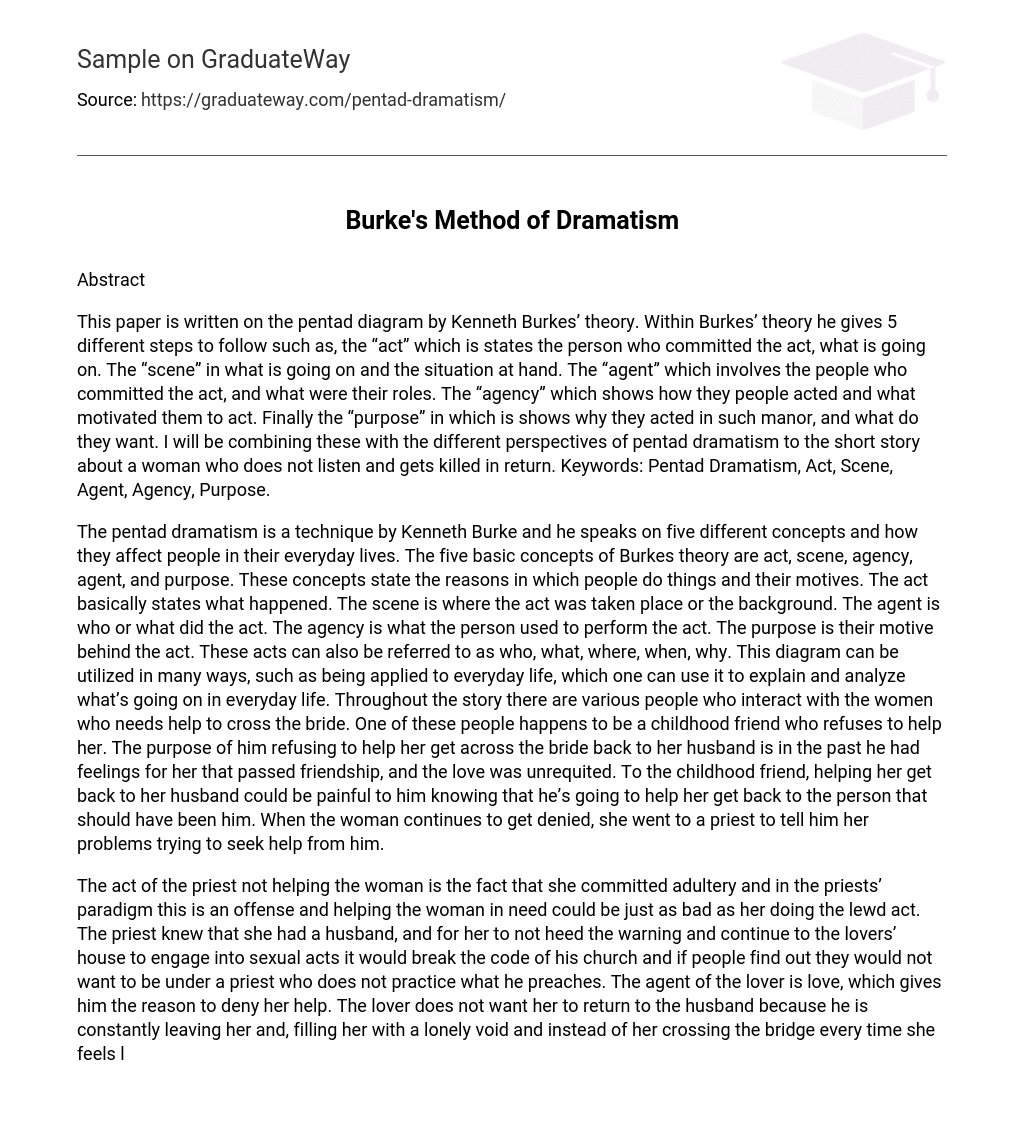Abstract
This paper is written on the pentad diagram by Kenneth Burkes’ theory. Within Burkes’ theory he gives 5 different steps to follow such as, the “act” which is states the person who committed the act, what is going on. The “scene” in what is going on and the situation at hand. The “agent” which involves the people who committed the act, and what were their roles. The “agency” which shows how they people acted and what motivated them to act. Finally the “purpose” in which is shows why they acted in such manor, and what do they want. I will be combining these with the different perspectives of pentad dramatism to the short story about a woman who does not listen and gets killed in return. Keywords: Pentad Dramatism, Act, Scene, Agent, Agency, Purpose.
The pentad dramatism is a technique by Kenneth Burke and he speaks on five different concepts and how they affect people in their everyday lives. The five basic concepts of Burkes theory are act, scene, agency, agent, and purpose. These concepts state the reasons in which people do things and their motives. The act basically states what happened. The scene is where the act was taken place or the background. The agent is who or what did the act. The agency is what the person used to perform the act. The purpose is their motive behind the act. These acts can also be referred to as who, what, where, when, why. This diagram can be utilized in many ways, such as being applied to everyday life, which one can use it to explain and analyze what’s going on in everyday life. Throughout the story there are various people who interact with the women who needs help to cross the bride. One of these people happens to be a childhood friend who refuses to help her. The purpose of him refusing to help her get across the bride back to her husband is in the past he had feelings for her that passed friendship, and the love was unrequited. To the childhood friend, helping her get back to her husband could be painful to him knowing that he’s going to help her get back to the person that should have been him. When the woman continues to get denied, she went to a priest to tell him her problems trying to seek help from him.
The act of the priest not helping the woman is the fact that she committed adultery and in the priests’ paradigm this is an offense and helping the woman in need could be just as bad as her doing the lewd act. The priest knew that she had a husband, and for her to not heed the warning and continue to the lovers’ house to engage into sexual acts it would break the code of his church and if people find out they would not want to be under a priest who does not practice what he preaches. The agent of the lover is love, which gives him the reason to deny her help. The lover does not want her to return to the husband because he is constantly leaving her and, filling her with a lonely void and instead of her crossing the bridge every time she feels lonely; he wants her to stay there with him because sharing her is not in his intentions. Summing everything up I went through Kenneth Burke’s pentad dramatism and how it relates to everything in life giving people the reason to do things, where things went down and the reasons behind the actions that were taken place such as the various people denying the woman help because of certain reason such as the childhood friend not getting his love returned to the priest going against what he believes in. I applied Burkes theory to a mischievous woman who gets killed because she was refused help from people around her and did not listen to the words of a maniac killer.
References
McKenzie, C.B. “Pentad of Dramatism.” New York, October 16th, 2012





